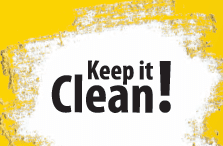
Around 90% of Canadian canola is exported, and our customers have high standards when it comes to clean seed, oil and meal. Residues of crop protection products must be below their “maximum residue limits” (MRLs). MRLs are established for every pesticide in our major export markets. It is essential that all growers, agronomists and retailers do not use or promote unregistered pesticides or those with unacceptable residues.
Here are three important points to follow before using a product on canola:
1. Check the label to ensure the product is registered in Canada for use on the crop intended. Products are registered, not active ingredients. If one product is registered for canola in Canada, a different product with the same active ingredient is not automatically approved for the same use. Rates and formulations could be different for the two products, for example, making the residual risk too high for the unapproved product.
2. Make sure the product won’t cause concerns for canola exports. In some cases even though a product may be registered for use on canola, it may result in residues that are not acceptable in export markets. Also, products that were once approved for use on canola can have registrations withdrawn if approvals change in key export markets. Keep up to date on a product’s registration status, especially for products that have been stored on farm. The Canola Council of Canada works with the value chain to ensure that these products are not used on canola. Farmers and agronomists can find a list of unacceptable products at www.keepingitclean.ca
3. Follow the label for rates and timing. Applying higher than label rates, outside the approved crop stage or without leaving required time for the pre-harvest interval can increase residue levels on harvested seed. Check out the provincial Guides to Crop Protection and visit www.spraytoswath.ca for more info.
Growers and retailers have an important role in meeting customer standards for pesticide residues. For these reasons, we ask that growers check approvals for all products they plan to apply on canola.
Canola accounts for a large percentage of the revenue on many Western Canadian farms, and that revenue derives almost entirely from exports to four markets — the U.S., China, Japan and Mexico. Tarnishing Canadian canola’s reputation and jeopardizing sales in one of these markets due to a pesticide residue infraction could mean billions in lost revenue for Canadian farms. Companies and countries that import Canadian canola test regularly, and tests are becoming more and more precise. Using products that are registered and export approved for use on canola is critical. Ask before you buy.
Source: Alberta Canola Producers Commission